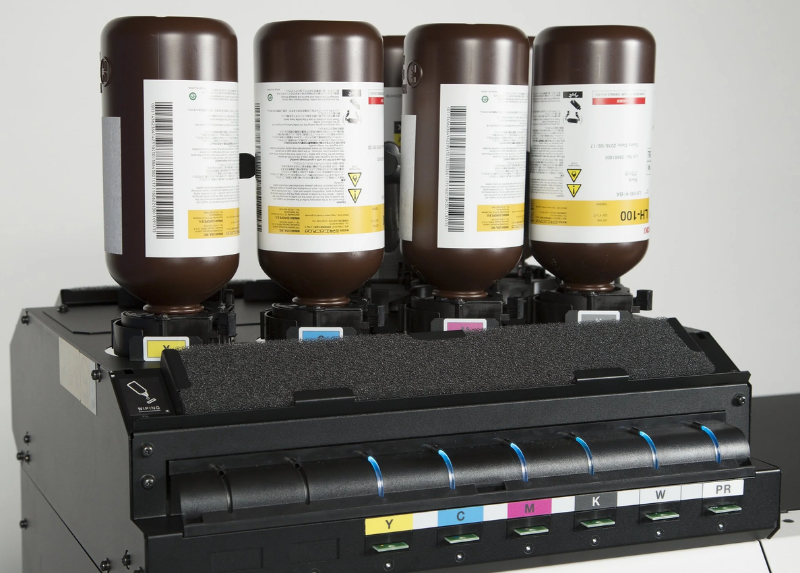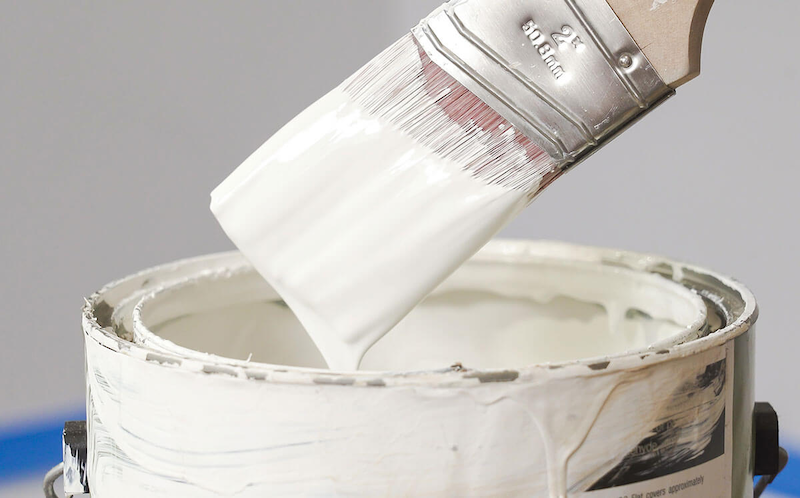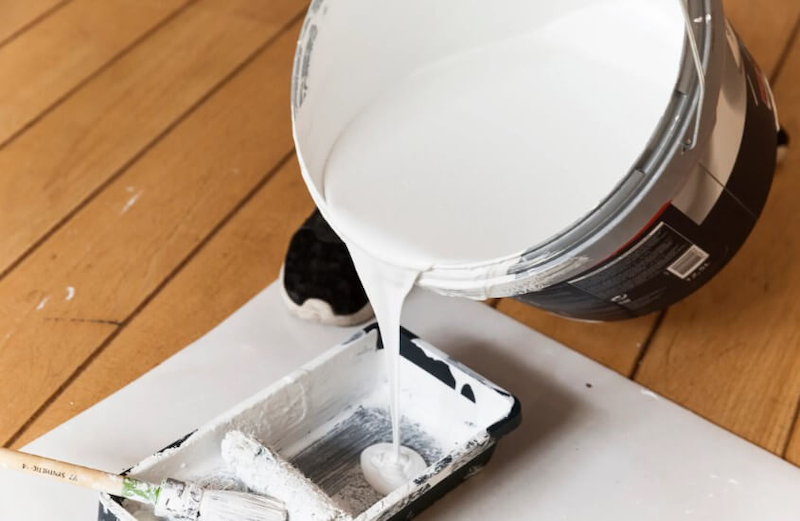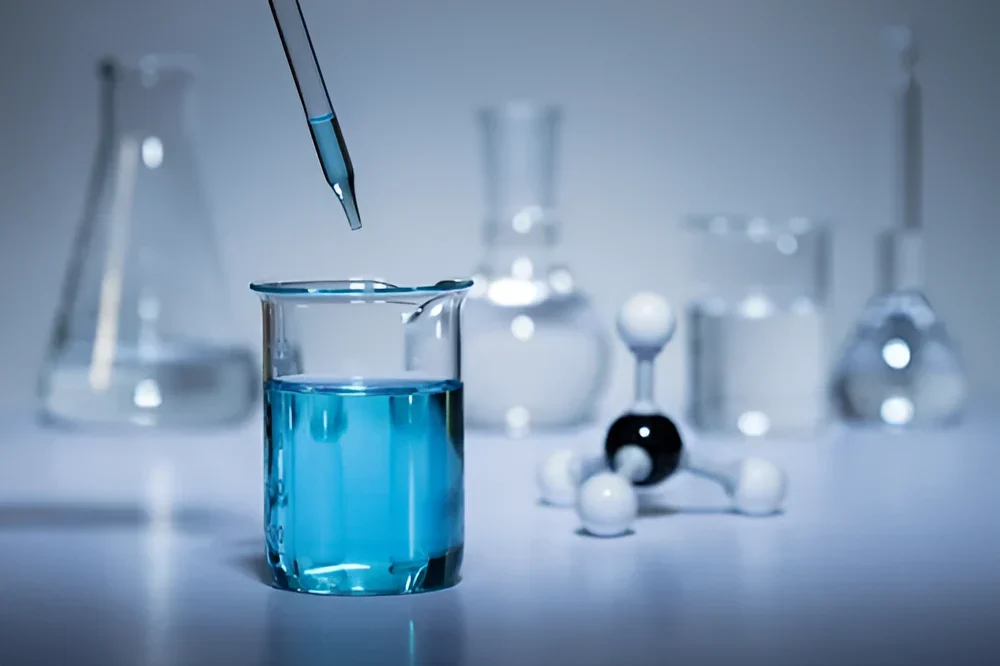Green Solvent: Physical Properties, Outstanding Characteristics & Storage Precautions
14/07/2025
|
Industry news
In the world and in Vietnam, green solvents (such as DMC, bioethanol, ionic liquids) are increasingly used thanks to green chemistry policies and environmental regulations such as: REACH (EU), TSCA (USA), and Montreal Protocol. They are applied in printing, painting, pharmaceuticals, and cleaning to reduce VOCs and toxic waste, not only minimizing pollution but also bringing high performance and sustainability. The following article will clarify the physical properties, outstanding characteristics and storage notes when using green solvents, and highlight practical applications in Vietnam and the world. See now!
What are green solvents?
Green solvents are solvents designed and used in chemical processes to minimize negative impacts on the environment and human health. They are often developed within the framework of green chemistry, a field that focuses on sustainable solutions, reducing the use of toxic substances and optimizing resources.
They are called “green” because:
- Environmentally friendly: Made from renewable resources, less toxic, biodegradable, and reduces greenhouse gas emissions.
- Safer: Reduced risk of harm to human health and ecosystems compared to traditional solvents such as toluene, benzene, or chloroform, which can cause cancer or organ damage.
- Sustainable performance: Meets green chemistry principles, such as reducing energy consumption and reusing in industrial processes.
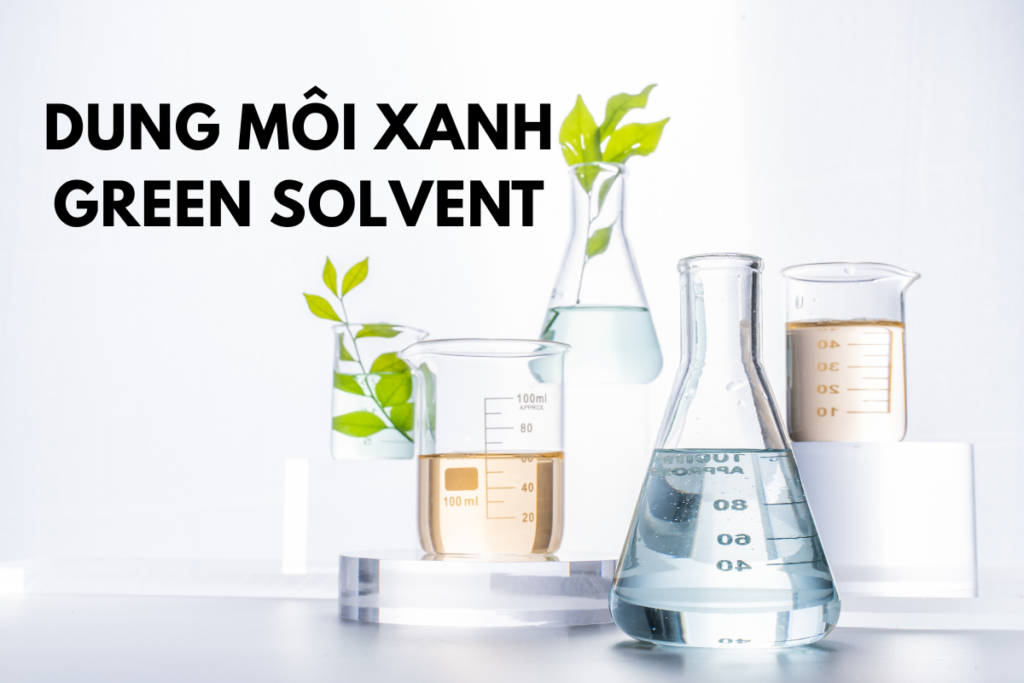
Physical properties of green solvents
- Molar mass (g mol -1): Green solvents have a variety of masses, depending on the chemical structure. For example, Dimethyl Carbonate (DMC) has a molar mass of 90.08 g/mol, ethanol is 46.07 g/mol.
- Solubility in water (at 25 °C): Some green solvents such as ethanol are completely soluble in water, while DMC has limited solubility (139g/L). Ionic liquids can adjust their solubility depending on the anion and cation, suitable for polar or non-polar applications.
- Melting point (°C): Green solvents usually have low melting points, ensuring a liquid state under normal conditions. For example, DMC has a melting point of 4 °C, ethanol is -114.1 °C.
- Boiling point (°C): The boiling point of green solvents varies depending on the type. DMC has a boiling point of 90 °C, ethanol is 78.4 °C, while ionic liquids often have very high boiling points (>200 °C) or are non-volatile, suitable for high temperature processes.
- Density (g/mL): The density of green solvents affects solubility and transport. Ethanol has a density of 0.789 g/mL, DMC is 1.07 g/mL, and ionic liquids usually have a density of 1.1 to 1.5 g/mL, depending on the structure.
- Dielectric constant: This is an index reflecting polarity. Ethanol has a high dielectric constant (24.5), suitable for polar substances, while DMC has a low value (3.1), ideal for non-polar compounds. Ionic liquids have adjustable dielectric constants, flexible for many applications.
- Vapor pressure: Green solvents often have low vapor pressure, reducing VOCs emissions. DMC has a vapor pressure of 55 mmHg at 25 °C, ethanol is 59 mmHg, while ionic liquids have almost no vapor pressure, reducing air pollution.
- Viscosity: Viscosity affects flow and solubility. Ethanol has a low viscosity (1.2 cP at 20 °C), DMC is 0.63 cP, while ionic liquids are typically higher in viscosity (10-500 cP), requiring special operating conditions.
These physical properties help green solvents optimize performance in industrial applications while minimizing environmental impact compared to traditional solvents.
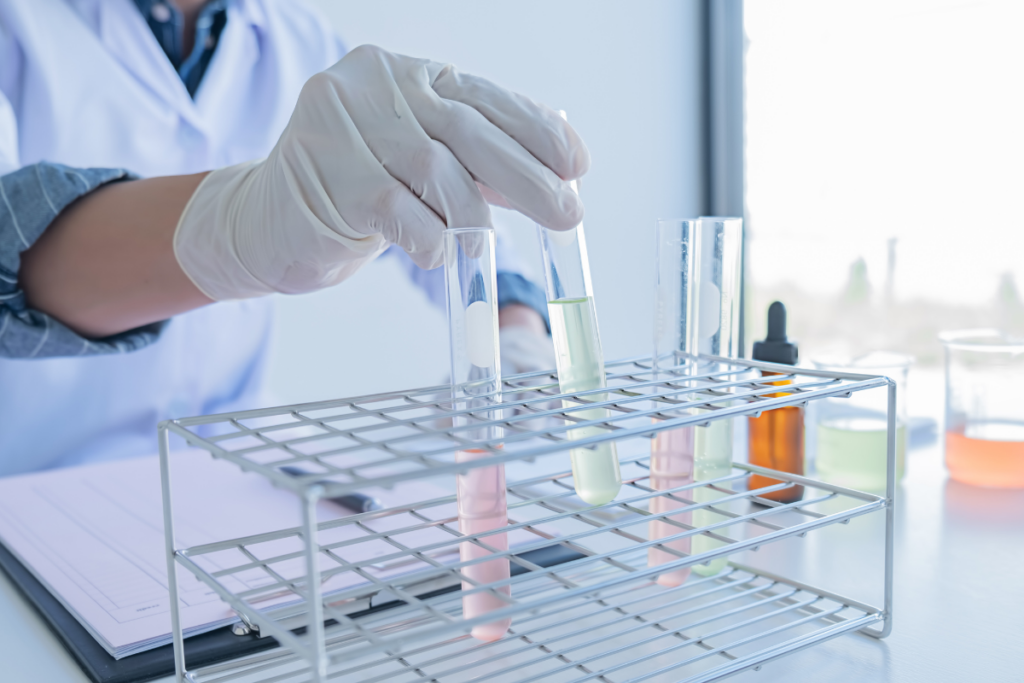
Outstanding Characteristics of Green Solvents
- Low Toxicity: Less harmful to humans and the environment.
- Biodegradability: Easily broken down by microorganisms; does not accumulate in the environment.
- Renewable Origin: Produced from biological or recycled materials (such as glycerin from biodiesel).
- Non-Volatile or Low Volatility: Reduces solvent vapor emissions (VOCs – Volatile Organic Compounds), improving air quality.
- High Performance: Excellent solubility; compatible with various industrial applications.
- Stability: Thermally and chemically stable; suitable for harsh processes.
- Reusability: Easily recyclable or recoverable, reducing costs and waste generation.
Top 7 Widely Used Green Solvents in Vietnam and Worldwide
Dimethyl Carbonate (DMC)
- A non-toxic, biodegradable solvent produced from CO₂ and methanol. DMC has low polarity and low volatility, making it a replacement for toxic solvents such as MEK (methyl ethyl ketone) or toluene.
- Applications: Used in the production of paints, inks, adhesives, and chemical synthesis.
Water
- A polar solvent, the safest and most environmentally friendly, non-toxic, and readily available. Widely used due to its ability to dissolve polar compounds.
- Applications: Chromatography, cleaning, and various industrial processes.
Supercritical Carbon Dioxide (scCO₂)
- Non-toxic, non-flammable, and easily recyclable. In its supercritical state (above 31°C and 73 atm), scCO₂ has excellent solubility properties.
- Applications: Extraction of pharmaceuticals, surface cleaning, and materials production.
Ionic Liquids
- Liquid salts that are non-volatile, thermally and chemically stable, and can be structurally tailored for specific applications.
- Applications: Green chemical synthesis, biomass processing, and compound extraction.
Glycerin
- A byproduct of biodiesel, non-volatile, safe, and environmentally friendly. Glycerin has good solubility and high viscosity.
- Applications: Used in bioplastic production and printing inks.
Ethanol
- Derived from biological sources (such as corn or sugarcane), ethanol is a polar, safe, and biodegradable solvent.
- Applications: Used in paints, inks, and pharmaceuticals.
Deep Eutectic Solvents (DES)
- Mixtures of compounds with low melting points, environmentally friendly, and easily prepared from natural materials. DESs have low toxicity and high reusability.
- Applications: Used in natural compound extraction, biomass processing, and biofuel production.
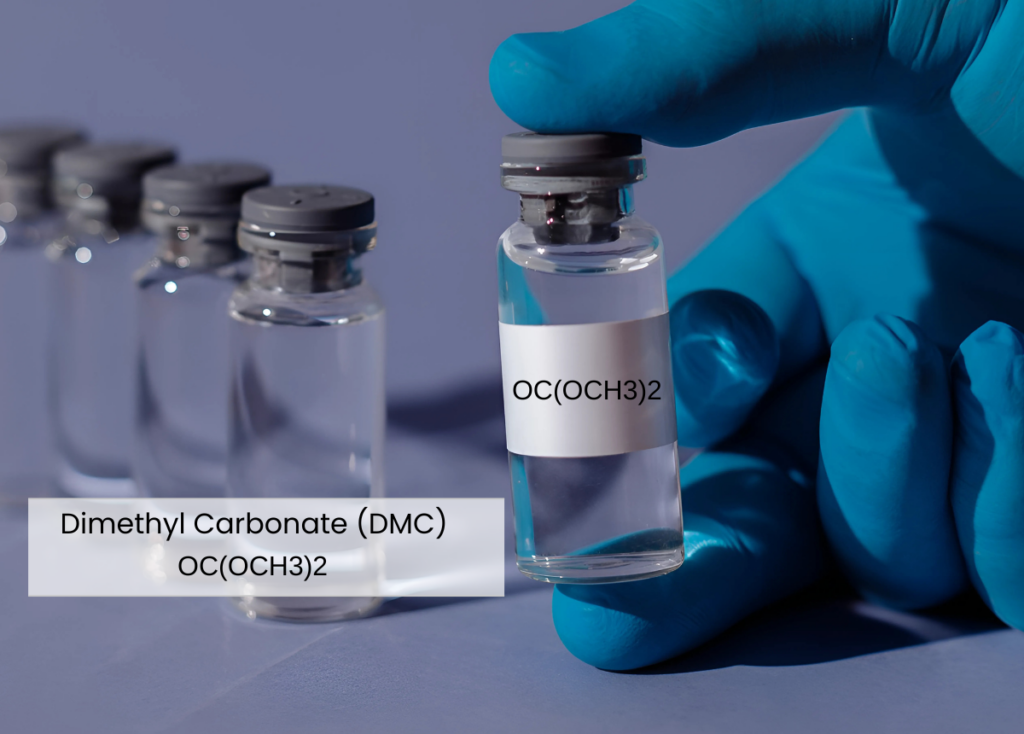
Applications of Green Solvents in Industry
- Printing Industry:
-
- Green solvents such as DMC, ethanol, and glycerin are used in inks to reduce VOCs, ensuring safety for workers and the environment. They help improve color fastness and adhesion on surfaces like paper, plastic or fabric.
- Example: Bio-inks that use glycerin help reduce the use of hazardous petrochemical-based solvents.
- Paints and Coatings Manufacturing: DMC and ethanol replace toxic solvents in paints, reduce viscosity, increase film durability, and are environmentally friendly.
- Pharmaceuticals: Ionic liquids and supercritical CO₂ (scCO₂) are used in the extraction of active ingredients and drug synthesis, ensuring high purity and reduced waste.
- Cleaning Industry: Green solvents such as ethanol or DES (Deep Eutectic Solvents) are used in dry cleaning, replacing the toxic tetrachloroethylene.
- Plastics and Polymer Production: Glycerin and DMC are used in the production of bioplastics, reducing dependency on petrochemical-based chemicals.
- Chromatography: Water, ethanol, and ionic liquids are used in various chromatography techniques (normal phase, reverse phase, ion exchange) for the separation and purification of chemicals.
- Biomass Processing and Biofuel Production: Ionic liquids and DES are used to separate cellulose or extract precious metals, improving biofuel production efficiency.
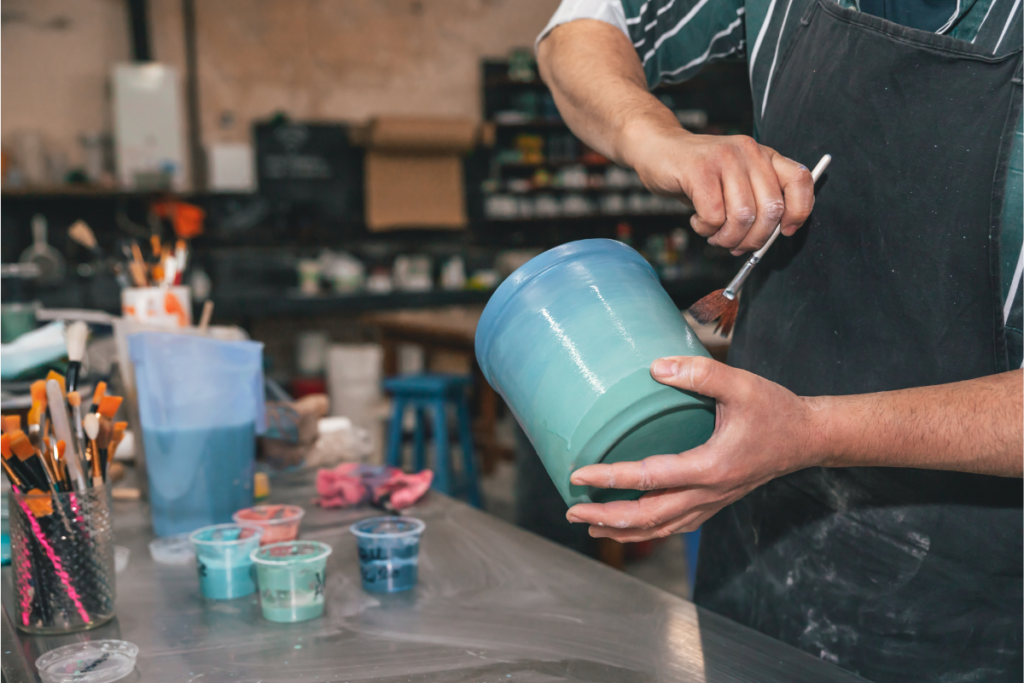
Notes on Usage and Storage of Green Solvents
| Solvent | Pictogram | Hazards | Storage |
| Ethyl Lactate | 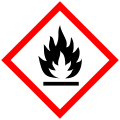 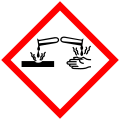  |
Flammable liquid and vapor. Causes serious eye damage. May cause respiratory irritation. | Keep away from flames, high-temperature environments, and sources of ignition. |
| Dimethyl Carbonate (DMC) |   |
Flammable liquid. May cause mild irritation upon contact with skin or eyes. | Keep away from heat and sparks. Store in a sealed container in a dry place, away from direct sunlight. |
| Ethanol |   |
Highly flammable. Causes skin and eye irritation with prolonged contact. Inhalation of high concentrations may cause dizziness. | Store in a sealed container, away from high heat and flames. Ensure good ventilation. Use personal protective equipment when handling. |
| Glycerin | Low hazard, but prolonged contact may cause skin dryness due to its hygroscopic nature. | Store in a sealed container in a cool, shaded place. No special protective measures required under normal conditions. |
Green solvents are not only effective alternatives to traditional hazardous solvents but also key drivers of the green economy and sustainable development. With outstanding properties such as low toxicity, biodegradability, and renewable origins, they are increasingly applied across various industries. However, to maximize their effectiveness and ensure safety, strict adherence to usage and storage guidelines is essential.
K-CHEM VIETNAM CO., LTD
- Address: N6B Street, Lot F, Phu Chanh 1 Agricultural Cluster, Phu Chanh Ward, Tan Uyen City, Binh Duong Province, Vietnam
- Tel: +84 274 362 0218
- Email: info@k-chem.vn


